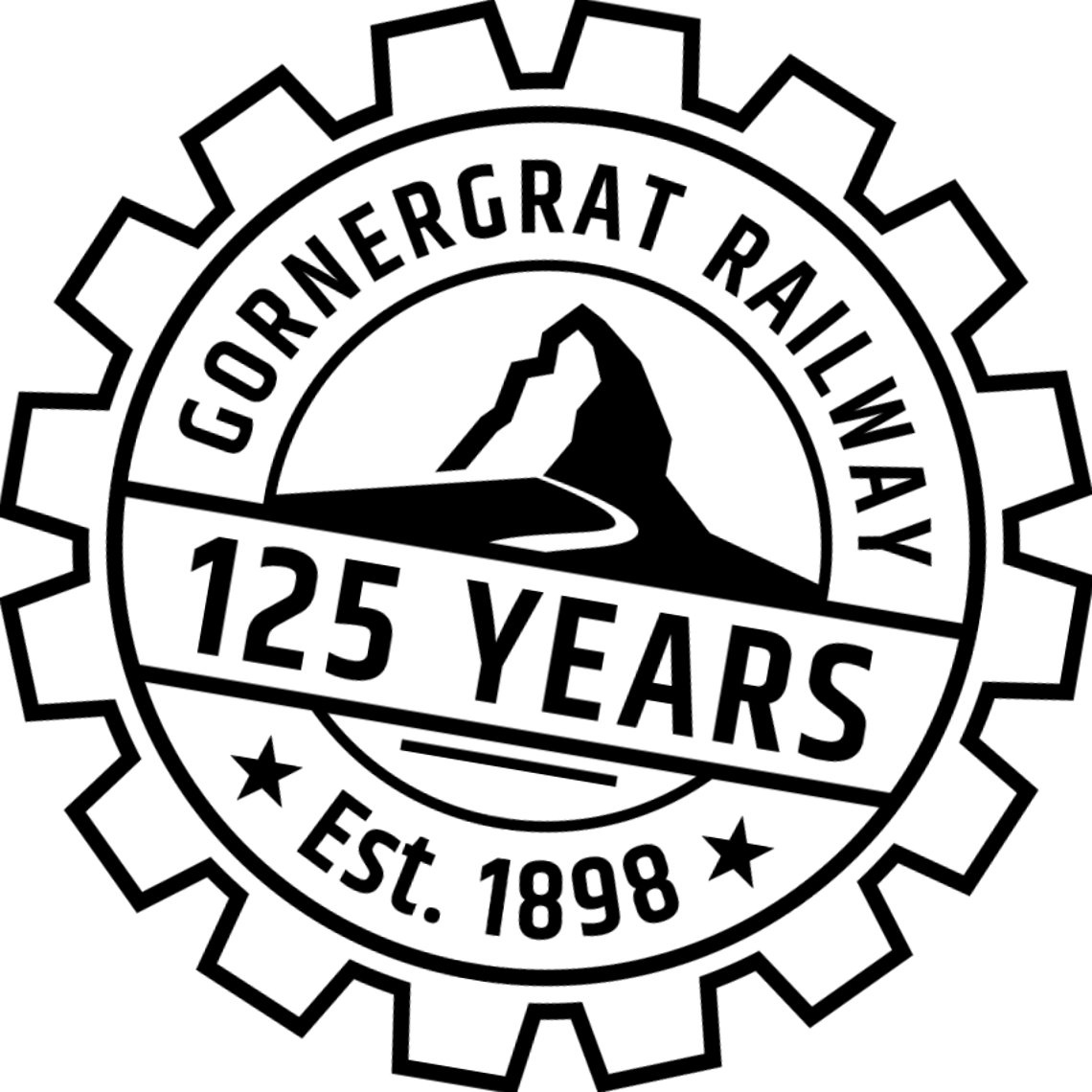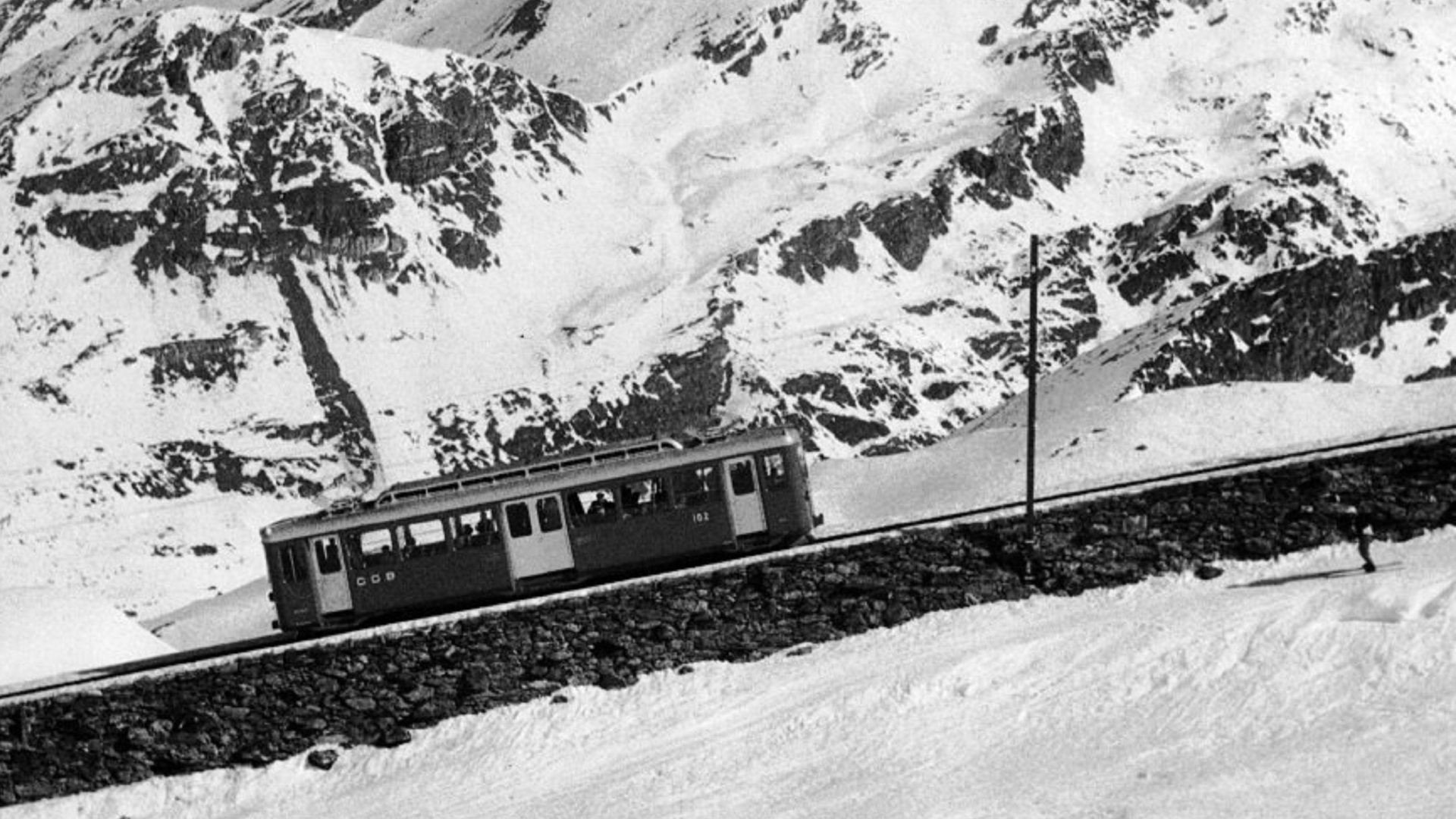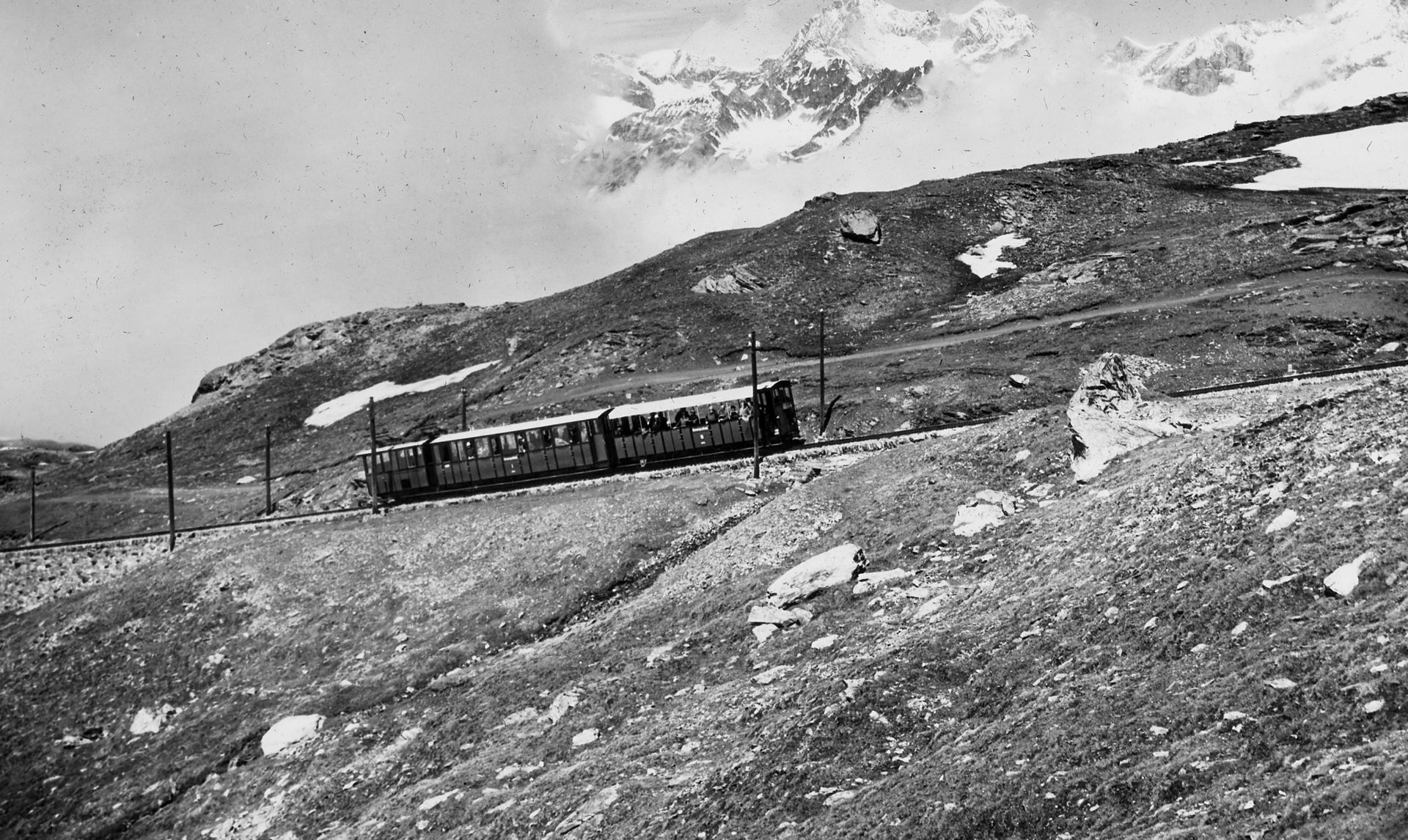Winter operation places higher demands on rolling stock
Story 47
Just a few years after the Gornergrat Railway began to transport passengers in winter, those in charge came to the conclusion in 1944 that the rolling stock needed to be improved for winter operation. They awarded a contract to Kurt Wullschleger for this demanding task. The task was difficult as there were numerous challenges to contend with.
Trains for the summer
For the first 30 years, the Gornergrat Railway operated exclusively in summer. Accordingly, the railway had at that time procured vehicles for summer operation. However, the five Rowan compositions soon no longer met the increased demands for winter operation. The rolling stock had to be redesigned.
Well-thought-out design
Kurt Wullschleger, a talented mechanical engineer, was commissioned to develop new railcars for the Gornergrat Railway. The biggest challenge was to meet the requirements of both winter and summer operation. It was also important for passengers to have an undisturbed view of the surrounding mountain landscape at all times. The solution: a light railcar with 56 seats and 54 standing places. The construction of the frameless side windows ensured an unobstructed view of the beautiful landscape.
Travel time almost halved
Another requirement was efficient entry and exit for the skiers. Wullschleger solved this problem with three side doors, the middle one being a particularly wide double door. The body of the railcar was also designed higher to provide space for skiers to carry their skis. The new railcars reached a top speed of 14.5 km/h and the journey was almost halved to around 41 minutes, which was particularly important for winter operation.
In service since 1947
In the summer of 1947, the first two newly developed railcars were put into operation. By 1965, a further ten light railcars were added. Wullschleger’s development work paid off, as all the stipulated requirements were met. Passengers benefited from the new comfort, the new railcars increased efficiency and enabled the Gornergrat Railway to run smoothly in both summer and winter.


